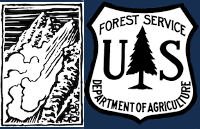Snowpack and Avalanche Discussion
<p><span><span><span><span><span><span>The primary avalanche concern is </span></span></span></span></span></span><span><span><span><strong><span><span>wind slab avalanches</span></span></strong></span></span></span><span><span><span><span><span><span> where yesterday’s strong wind drifted recent snow into slabs up to a couple feet thick. These slabs are possible for a person to trigger today. Avoid steep, recently wind-loaded terrain, typically found near ridgelines, identifiable by cornices above or a textured or rounded snow surface. For safer conditions seek out slopes sheltered from the wind, often found at middle and lower elevations where trees block the wind.</span></span></span></span></span></span></p>
<p><span><span><span><span><span><span>There is a small chance for larger slabs to break 2-3 feet deep below last weekend’s snow. Yesterday near Cooke City skiers had a collapse and unstable test results on a weak layer below last weekend’s snow (</span></span></span></span></span></span><a href="https://www.mtavalanche.com/node/34725"><span><span><span><strong><span…;), and last weekend we saw similar layers near West Yellowstone and Island Park (</span></span></span></span></span></span><a href="https://www.mtavalanche.com/node/34631"><span><span><span><strong><span…;).</span></span></span></span></span></span></p>
<p><span><span><span><span><span><span>Near West Yellowstone, weak layers buried in late January continue to result in </span></span></span></span></span></span><span><span><span><strong><span><span>persistent slab avalanches </span></span></strong></span></span></span><span><span><span><span><span><span>up to 4 feet deep. Although these types of slides have been infrequent, avalanches were triggered on this layer yesterday and Wednesday (</span></span></span></span></span></span><a href="https://www.mtavalanche.com/node/34697"><span><span><span><strong><span… and photos</span></span></u></span></strong></span></span></span></a><span><span><span><span><span><span>) in the Taylor Fork. These slides have not been huge, but large enough to be deadly, especially in much of the terrain where they have occurred, with trees or depressions at the bottom where snow can pile up deep. Select terrain with minimal terrain traps like trees, cliffs or gullies, carry avalanche rescue gear, and travel one at a time on steep slopes.</span></span></span></span></span></span></p>
<p><span><span><span><span><span><span>Human-triggered avalanches are possible and the avalanche danger is MODERATE.</span></span></span></span></span></span></p>
<p><span><span><span><span><span><span>Near Bozeman and Big Sky </span></span></span></span></span></span><span><span><span><strong><span><span>wind slab avalanches</span></span></strong></span></span></span><span><span><span><span><span><span> are the primary avalanche concern. Yesterday, strong wind drifted recent snow into fresh slabs 6” to a couple feet thick. These slabs can avalanche under the weight of a person today. Below the recent snow we have not found concerning weak layers in the snowpack, and deeper avalanches are unlikely. Yesterday on Buck Ridge near Big Sky we dug four snowpits that did not show any potential instability below the recent snow, and we saw a couple small natural wind slab avalanches (</span></span></span></span></span></span><a href="https://www.mtavalanche.com/node/34724"><span><span><span><strong><span…, photo and video</span></span></u></span></strong></span></span></span></a><span><span><span><span><span><span>). If you choose to travel on steep slopes, seek out slopes without recent wind-loading and dig down a couple feet to double check for potential weak layers or instability (</span></span></span></span></span></span><a href="https://www.mtavalanche.com/node/34715"><span><span><span><strong><span… and video</span></span></u></span></strong></span></span></span></a><span><span><span><span><span><span>). The danger is MODERATE on wind-loaded slopes and LOW on all other slopes.</span></span></span></span></span></span></p>
